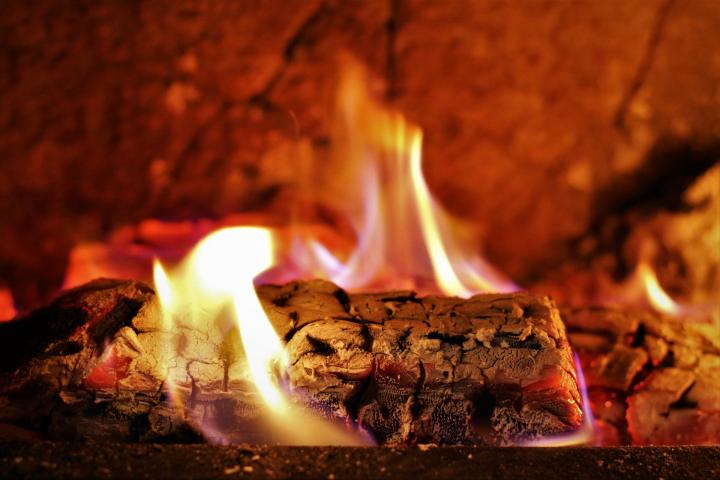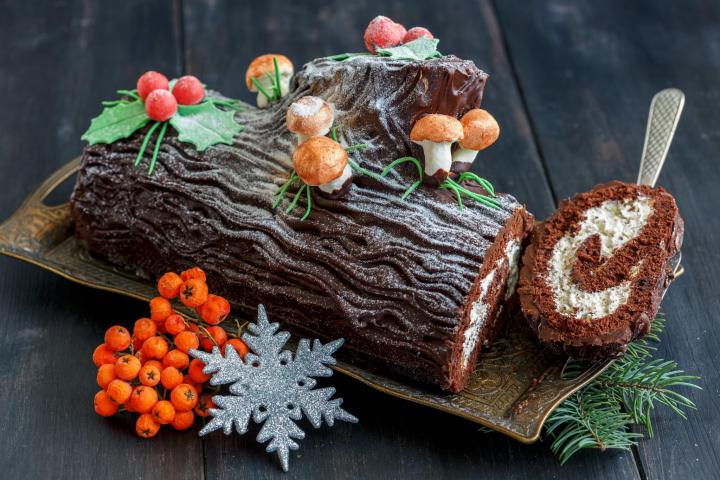
The Story Behind Yule and the Yuletide Season
ADVERTISEMENT
Whoever whatever whenever your tradition is for celebrating nature’s rhythms, blessings to you! Dogma is antithetical to spiritual living so follow your highest aspiration to recognize divinity!
Agreed & among friends. Altid Bestige. ᛏ
Well said.
I was told that birch is endangered. Now by reading your stories I think that's inaccurate.
Hi Marcy, there are different birch species, and yellow birch is endangered in Illinois. Illinois is along the southwestern range limit for yellow birch. Species can be either federally endangered or state endangered. Perhaps where you live is a species of birch that is endangered in your state.
Your article about the yule log repeats a debunked theory about the date of Christmas. The Roman feast of Sol Invictus. December 25 was nine months after March 25, the date of the vernal equinox and a date linked to the conception of Jesus (celebrated as the Feast of the Annunciation). Of course, selecting March 25 for the conception was also rather arbitrary, it being calculated [?] as the date of the death of Jesus and having conception and death on the same date signified a divine cycle. he Philocalian calendar of AD 354, part VI, gives a festival of NATALIS INVICTI on 25 December. There is limited evidence that this festival was celebrated before the mid-4th century.
The Philocalian calendar of AD 354 gives a festival of "Natalis Invicti" on 25 December. There is limited evidence that this festival was celebrated before the mid-4th century.[37][38]
The idea that Christians chose to celebrate the birth of Jesus on 25 December because this was the date of an already existing festival of the Sol Invictus was expressed in an annotation to a manuscript of a work by 12th-century Syrian bishop Jacob Bar-Salibi.
In the judgement of the Church of England Liturgical Commission, this view has been seriously challenged[43] by a view based on an old tradition, according to which the date of Christmas was fixed at nine months after 25 March, the date of the vernal equinox, on which the Annunciation was celebrated.[44] The Jewish calendar date of 14 Nisan was believed to be that of the beginning of creation, as well as of the Exodus and so of Passover, and Christians held that the new creation, both the death of Jesus and the beginning of his human life, occurred on the same date, which some put at 25 March in the Julian calendar.[43][45][46] It was a traditional Jewish belief that great men lived a whole number of years, without fractions, so that Jesus was considered to have been conceived on 25 March, as he died on 25 March, which was calculated to have coincided with 14 Nisan.[47] Sextus Julius Africanus (c.160 – c.240) gave 25 March as the day of creation and of the conception of Jesus.[48] The tractate De solstitia et aequinoctia conceptionis et nativitatis Domini nostri Iesu Christi et Iohannis Baptistae falsely attributed to John Chrysostom also argued that Jesus was conceived and crucified on the same day of the year and calculated this as 25 March.[44][46] A passage of the Commentary on the prophet Daniel by Hippolytus of Rome, written in about 204, has also been appealed to.[49]
Among those who have put forward this view are Louis Duchesne,[50] Thomas J. Talley,[51] David J. Rothenberg,[52] J. Neil Alexander, [53] and Hugh Wybrew.[54]
Pre Christian worship realised that the winter equinox was a big part in their life especially in the north. Abrahamic religions had nothing to do with the worship, it's about the return of the SUN and a time of new beginning and fertility. Jumping on the band waggon is a tradition held by the Abrahamic religions of the east. Hyperborea is the place where the yule log meant hope and future after the shortest day passing. You will not understand the meaning of yuletide if you are from the middle east with the religious beliefs from that area. Dates,numbers and the history are insignificant when those who wrote the words and numbers have an ideology that doesn't coexist with the geography of the believer of pre Christianity. Enjoy life and prosper because this year we will lose old age pensioners to the winter in the NORTH where it's cold.
The Yule Log article also has false information on the Yule Log and Candle Origin. Candles were used by Christians and many other religions. Christmas lights originated from candles.
The Yule Log was always a Log. The Chrismas Tree was adopted from Celtic tradition in Briton under the Holy Roman Empire. The custom was to dig up a living tree, bring it inside and take it back outside and plant the tree, not set it on fire.
Somehow this writer twisted several different historical accounts into one, mostly-false story.
Another note: Yule originated in Scandinavia but so too did the Germanic people. Anglo Saxons and other Germanic people carried the customs of their Norse ancestors south on foot, generations before the Viking Era. Given what we know of history it's likely these traditions all came together in what is now known as England, where the Romans brought Cristianity to the Celtic Britons, then The Anglo Saxons mixed in their culture while converting to Christianity and later the Normans arrived with a variation of what the Saxons had already brought.
We don't have specific records of cultural appropriation but we do know the Saxons in England converted to Christianity before missionaries from Rome (the city, after the fall of the Empire) brought Christianity to Germany which was long before reaching Scandinavia.
The other possibility is the Frankish Invasion of Gaul: When France stopped being Latin speaking Gauls (Celts) and started to convert the Germanic Franks to Christianity.
It was assuredly somewhere where Latin, Germanic and Celtic languages collided that the 3 separate religions combined customs which would mainly be France and England. As for Ireland and Scotland, there's no official record of any Norse influence and for both of those states, English came after it had already been mixed with Latin and Britton (British Celtic language). We only know that on the whole, Roman and Norman Invasion failed in Ireland and Scottland and that Roman Invasion failed in Germany (Germans already being of Norman decent, having pushed Celts out of Germany).
Wow ,so celts spoke latin,tell that to the Welsh,Irish and gaelic highlanders where I live. The Norman's came from the norse way after germania so you're wrong. The Norman's where invited into Ireland and over time took control like they did in England. Building castles after the motte and Bailey defences couldn't stand up to the weather. Sorry for turning this into a history lesson, just celebrate,get warm,get drunk ,get fed and get laid as the best cure is to forget about them dark cold nights. Common sense prevails where books can't go.
This is my first visit to this site , I LOVE this place and intend to be a permanent guest here !











